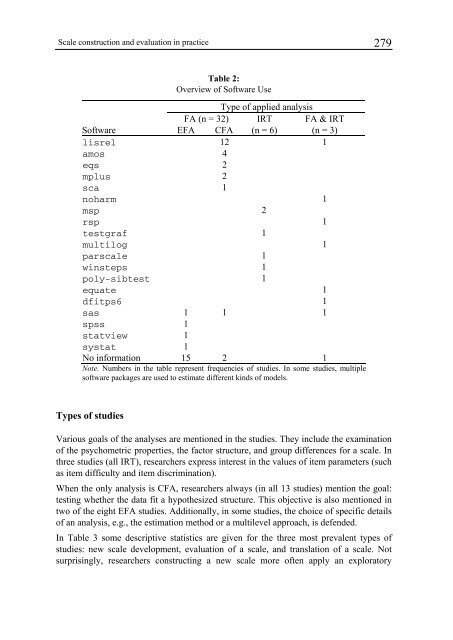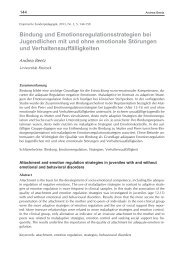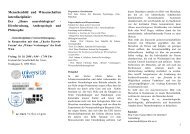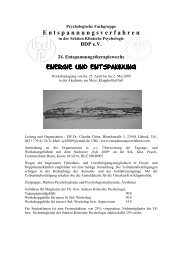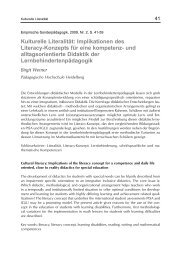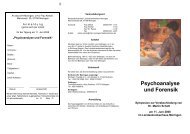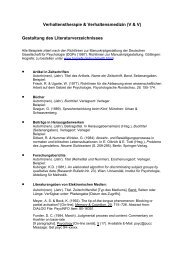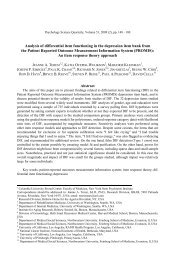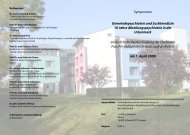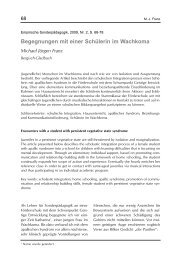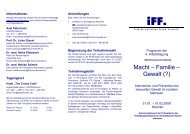Scale construction and evaluation in practice: A review of factor ...
Scale construction and evaluation in practice: A review of factor ...
Scale construction and evaluation in practice: A review of factor ...
Create successful ePaper yourself
Turn your PDF publications into a flip-book with our unique Google optimized e-Paper software.
<strong>Scale</strong> <strong>construction</strong> <strong>and</strong> <strong>evaluation</strong> <strong>in</strong> <strong>practice</strong> 279<br />
Table 2:<br />
Overview <strong>of</strong> S<strong>of</strong>tware Use<br />
Type <strong>of</strong> applied analysis<br />
FA (n = 32) IRT FA & IRT<br />
S<strong>of</strong>tware EFA CFA (n = 6) (n = 3)<br />
lisrel 12 1<br />
amos 4<br />
eqs 2<br />
mplus 2<br />
sca 1<br />
noharm 1<br />
msp 2<br />
rsp 1<br />
testgraf 1<br />
multilog 1<br />
parscale 1<br />
w<strong>in</strong>steps 1<br />
poly-sibtest 1<br />
equate 1<br />
dfitps6 1<br />
sas 1 1 1<br />
spss 1<br />
statview 1<br />
systat 1<br />
No <strong>in</strong>formation 15 2 1<br />
Note. Numbers <strong>in</strong> the table represent frequencies <strong>of</strong> studies. In some studies, multiple<br />
s<strong>of</strong>tware packages are used to estimate different k<strong>in</strong>ds <strong>of</strong> models.<br />
Types <strong>of</strong> studies<br />
Various goals <strong>of</strong> the analyses are mentioned <strong>in</strong> the studies. They <strong>in</strong>clude the exam<strong>in</strong>ation<br />
<strong>of</strong> the psychometric properties, the <strong>factor</strong> structure, <strong>and</strong> group differences for a scale. In<br />
three studies (all IRT), researchers express <strong>in</strong>terest <strong>in</strong> the values <strong>of</strong> item parameters (such<br />
as item difficulty <strong>and</strong> item discrim<strong>in</strong>ation).<br />
When the only analysis is CFA, researchers always (<strong>in</strong> all 13 studies) mention the goal:<br />
test<strong>in</strong>g whether the data fit a hypothesized structure. This objective is also mentioned <strong>in</strong><br />
two <strong>of</strong> the eight EFA studies. Additionally, <strong>in</strong> some studies, the choice <strong>of</strong> specific details<br />
<strong>of</strong> an analysis, e.g., the estimation method or a multilevel approach, is defended.<br />
In Table 3 some descriptive statistics are given for the three most prevalent types <strong>of</strong><br />
studies: new scale development, <strong>evaluation</strong> <strong>of</strong> a scale, <strong>and</strong> translation <strong>of</strong> a scale. Not<br />
surpris<strong>in</strong>gly, researchers construct<strong>in</strong>g a new scale more <strong>of</strong>ten apply an exploratory


